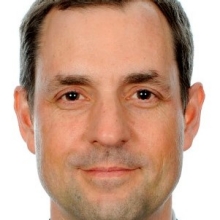
Blogs
Venice may seem like an unlikely location for an international development conference. But even though the Italian city is best known for its touristic appeal, it also turned out to be the perfect setting for the Understanding Risk Forum 2016.
Without action, parts of Jakarta, Ho Chi Minh City, Bangkok and numerous other coastal cities around the globe will continue to sink faster than the sea level rises. But a new report, The Making of a Riskier Future: How Our Decisions are Shaping Future Disaster Risk, documents that the threat to some of the world’s coastal megacities comes not as much from the sea but from within.
We at the Global Facility for Disaster Reduction and Recovery are excited this week to launch ThinkHazard!—a tool that will get natural disaster information into the hands of the people who really “need to know”.
Climate change is making the risk landscape more dynamic. It will take smarter, faster, innovative analytical tools to create the kind of up-to-date analysis of natural hazard risks that policy makers need to make long-term, risk-informed decisions.
One year ago today, the first in a series of massive earthquakes rocked Nepal. Nearly 9 thousand people lost their lives in the disaster. Over 20 thousand people were injured – many critically. As many as 450 aftershocks have shook the country since.
Protection to flooding changes the risk that communities face, with higher protection standards generally meaning less risk of damages and fatalities. But understanding of flood risk, especially at large scales, is made difficult by the fact that for most places we simply do not know what the current standards of protection are.
Also known as the "garden city”, Singapore is set to become a "city in a garden”. The abundance of greenery is a striking feature, with parks, green roofs, street side plants, and trees on every corner. But greenery is not there just to please the eye and create livable public areas — it also helps mitigate the risk of flooding.
In this video, Keiko Sakoda Kaneda (Disaster Risk Management Hub, Tokyo) and Daniel Levine (Tokyo Development Learning Center) elaborate on some of the key elements of their work program, and explain how they collaborate with development partners from around the world.
Lessons learned over time from post-conflict recovery and reconstruction efforts reflect the need to reinforce stabilization immediately following the end of a conflict. Being ready in advance with a recovery and reconstruction plan is one way to ensure that critical interventions can be implemented quickly following the cessation of hostilities.
It’s a simple yet essential idea: war and disaster are linked, and these links must be examined to improve the lives of millions of people around the world. More than half of people impacted by natural hazards lived in fragile or conflict-affected states.

 Linh X. Le
Linh X. Le
 John Roome
John Roome
 Alanna Simpson
Alanna Simpson
 Takuya Kamata
Takuya Kamata
 Zuzana Stanton-Geddes
Zuzana Stanton-Geddes
 Jolanta Kryspin-Watson
Jolanta Kryspin-Watson
 Ede Ijjasz-Vasquez
Ede Ijjasz-Vasquez
 Keiko Sakoda Kaneda
Keiko Sakoda Kaneda
 Daniel Levine
Daniel Levine
 Raja Rehan Arshad
Raja Rehan Arshad
 Francis Ghesquiere
Francis Ghesquiere